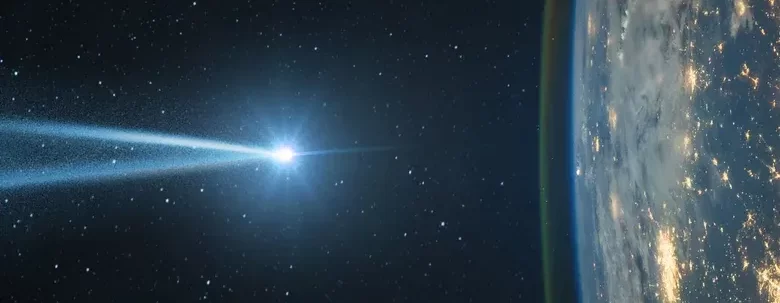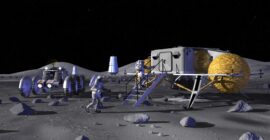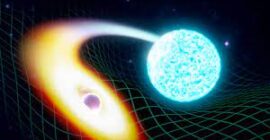According to Marina Brozovic, a scientist in NASA’s Jet Propulsion Laboratory (JPL) in California, the earth continues to be bombarded by asteroids. Because they are very small, most of the burning in the atmosphere before reaching the ground. However, in March 2022, an asteroid the size of a refrigerator entered the Earth’s atmosphere above the remote Norwegian Island of around 300 miles northeast of Iceland. Witnesses in Iceland said they saw a bright flash, a sign that this space became a fireball, but no meteorite was found.
Jumping back 114 years in 1908. Around 7:13 am (local Siberia time) on June 30, something happened near the Podkamennaya Tunguska river in Siberia, Russia. This event has been known as the “Tunguska event.” The theory received in general is that asteroids or comets enter the Earth’s atmosphere and explode around 15,000-30,000 feet (3-6 miles) above the river.
The explosion produced is proportional to 15 megatons of TNT, a thousand times stronger than “small children,” atomic bombs dropped on Hiroshima during World War II. In fact, it will be similar to dropping not only one but 185 of the same bomb. MID-AIRBURST destroys an area of 800 square miles (500,000 hectares) of forest and leveling more than 80 million pine trees.
According to David Morrison, a planetary science researcher at the Ames Nasa research center, “Tunguska is the biggest cosmic impact witnessed by modern humans.” Strangely, site investigations did not occur until 1927, when an expedition led by Leonid Alekseyevich Kulik from the St. Museum Petersburg reaches tunguska.
Fire Soccer Events Make Waste Up to 800 Miles of Forest Square
When Kulik arrived, he found the trees to be leveled radially as far as 20 miles from the earthquake explosion (through Britannica), which was very scorched so that even nineteen years later, very few leaves or trees began to grow back. However, he never found any crater of impact or fragments that show what caused the explosion.
The consussive explosion force created an earthquake of 4.5 to 5. According to NASA, a shock wave was recorded more than 3,100 miles away in London, and the explosion was heard 700 miles away. Thousands of deer were killed, but very few people died. The calculation shows the large volume of the gas released into the atmosphere when the object evaporates causes the night sky in Asia, Paris, and London to be illuminated for days (via WNYC radio).
While thousands of possibilities to observe something that morning, it takes a few decades to officially record eyewitness accounts. Most of them have turned into re -demands from the original witnesses. Many focus on fireballs that cross the sky, the ground vibrates, and the hot wind which is strong enough to bring down people and shake the building (through Britannica).
But in 2008, new facts emerged from the first hand account that was previously unknown. In 1948, Russian ethnographers and historian Sev’yan Vainshtein went to Sulomay to study local people known as Ket The The. According to Forbes, Sulomay is located 358 miles to the west where the Tunguska event occurs and is considered the farthest point of the center where the tree is torn down.
Most of Vainstein’s information gathered in harmony with what was already known … except for a relatively large detail. Until then, people thought the bright lights observed throughout the world occurred the night after the explosion, but according to Ket, the event actually occurred the night before (through Forbes).
Did 80 million Siberian trees get flattened by a mere flyby?
Since the 1928 Kulik Expedition, more than forty others have wandered to the Tunguska region (through Forbes), but environmental sample tests such as soil, trees, and rocks are always reportedly not convincing. Then, in 2013, Andrei E. Zlobin from the Russian Academy ‘claimed that he found the first meteorite of the event, but the results were once again unclear.
In the same year a small asteroid exploded 12 miles above the city of Chelyabinsk, Russia. This event is considered very similar to what happened in Tunguska. In this case, the fragments of this air explosion succeeded to the ground and were collected quickly. Fireballs are seen by thousands of people and are arrested in videos by many people from various directions. Since then this event allows scientists, including NASA, to extrapolate data that is very much needed and run computer models against the event. Still, large asteroids that rarely break up in the earth’s atmosphere so that a lot of uncertainty about them remains.
Another theory shows that the meteor almost missed the earth and only grazed it before turning back into space. It will explain why no fragments have ever been found. Helps strengthen this idea is the fact that the earth goes through what is known as the “taurid flock” meteor twice a year. Since then scientists have calculated that the earth passed this group of this at the time of the event.With so many theories, there is no objective conclusive proof, and the fact that famous memories cannot be relied upon and distorted from time to time, we may never know what happened in Siberia 114 years ago. However, in all possibilities, the event is exactly the exact as we think: the way the universe shows us how unexpected the events given.




